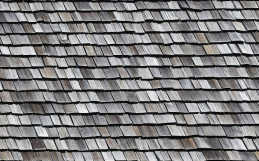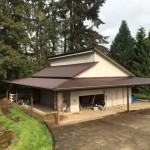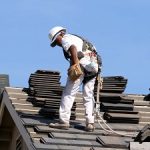More than ever, homebuilders have a wide variety of roofing materials to choose from. Slates and shakes, composite and architectural, clay and metal. But for most of North America, asphalt shingles are still king of the hill when it comes to the volume of houses that have them.
There are a lot of reasons for this. When properly installed by experienced roofing contractors, they can last for 25-30 years, so why rip off a perfectly fine roof for something new? They are easy to work with, relatively lightweight, and come in a variety of colors and looks. And the price is attractive to many homeowners.
So it makes sense when talking about roofing systems, most people will imagine 3-tab asphalt shingles. It’s what they are used to seeing and probably what they have on their home right now. That may change over the decade or two as shingle manufacturers improve designs for new homes and older roofs are being torn off to make way for something better.
But just because something is well-known doesn’t mean it’s completely understood. For example: why do asphalt shingles have those little granules all over? It seems like they would be easily rubbed off and don’t appear to help the shingle structurally. So why do roofing shingles look like sandpaper?
The Granules Help the Durability of Asphalt Shingles
Actually, those granules help the durability of asphalt roof shingles quite a bit. A fiberglass mat is covered in asphalt. The top surface that is exposed is impregnated with granules while the underside is coated with sand to prevent the shingles from sticking together during transport or storage.
While the granules don’t really help with the stability of the asphalt from a rigidity standpoint, they do help protect the roof surface as a whole. The granules help block UV rays from the sun that deteriorate the asphalt mat below.
That rough exterior acts as the first line of defense against physical threats as well, such as rain, hail, and snow. The granules also protect the shingles from other items, such as small branches or other debris. Of course, this material won’t stand up to large branches, but at that point, you may be looking at structural damage to the home as well.
Asphalt shingles, on the whole, also offer a measure of fire resistance, too. Made of slate, stone, ceramics, and other fire-resistant materials, the granules play a part in that protection.
Finally, those granules provide the distinct look of asphalt shingles. It would look pretty odd if the granules weren’t there. Obviously, the granules provide more than just aesthetics, but the comfort of something familiar shouldn’t be underestimated.
So why no granules on other products?
Asphalt shingles are the only product that features granules because, for the most part, other roofing products don’t need them. Slate shingles are already flame-resistant, composite shingles are made to stand up to weather without the granules, wood shingles can be treated to be protected from the sun, and laminated shingles (architectural) provide a wider variety of looks.
But the traditional 3-tab asphalt shingles paved the way, so to speak, for all of these other products. While they may not be used as much in new construction or when a remodel calls for a more modern look, they still have a place in today’s residential market.
If you have more questions about asphalt shingles, are thinking about installing a new roof, or want to know how to extend the life of your roof, contact Warner Roofing and Construction. We’ve been working in Clark County since 1992 and look forward to working with you.







